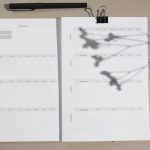In the realm of SQL Server, the GETDATE() function is a fundamental tool that provides the current system timestamp. Whether you’re auditing data changes, calculating date differences, or generating time-based reports, mastering GETDATE() is crucial for efficient and accurate database management.
Understanding GETDATE()
GETDATE() is a built-in SQL Server function that returns the current date and time as a datetime value. This is pulled directly from the system on which the SQL Server instance is running. Because it’s consistently available and easy to use, it’s the go-to function for retrieving timestamps in thousands of database applications.
Common Use Cases
There are multiple scenarios where GETDATE() becomes invaluable:
- Tracking data changes: Use it in INSERT or UPDATE statements to record when a change was made.
- Time-based filtering: Retrieve records based on recent activity, such as getting orders placed in the last 7 days.
- Report generation: Compare dates, filter data, or show real-time data metrics.
Key Tips for Using GETDATE()
While the use of GETDATE() might seem straightforward, there are a number of important considerations and tips that can improve your productivity.
1. Consistently Store Timestamps
If your application needs to store the exact time a row was created or updated, use GETDATE() in your default column value:
CREATE TABLE Orders (
OrderID INT PRIMARY KEY,
OrderDate DATETIME DEFAULT GETDATE()
);This automatically fills in the current timestamp when a row is inserted, ensuring a consistent data trail.
2. Avoid Time Drift with Server Clocks
Keep in mind that GETDATE() fetches time from the server’s system clock. Always ensure time synchronization across server nodes in a distributed architecture to avoid time drifts.

3. Format and Extract Components
Often, developers need to extract parts of the datetime value, such as just the date or just the hour. You can use SQL Server functions such as:
- CAST(GETDATE() AS DATE): Returns only the date portion.
- DATEPART(HOUR, GETDATE()): Returns the current hour.
- FORMAT(GETDATE(), ‘yyyy-MM-dd HH:mm’): Helps display in a specific format.
4. Use GETDATE() for Calculations
Date arithmetic can be done easily with GETDATE(). This allows for queries like “records created in the last 30 days”:
SELECT * FROM Sales
WHERE CreatedAt >= DATEADD(DAY, -30, GETDATE());This accurately filters only the relevant, recent records without the need for hardcoded dates.
GETDATE() vs. Other Time Functions
SQL Server offers other date and time functions like SYSDATETIME() or CURRENT_TIMESTAMP. Understanding the differences is essential:
- SYSDATETIME(): Returns a datetime2 value with higher precision than GETDATE().
- CURRENT_TIMESTAMP: ANSI SQL-compliant and functionally identical to GETDATE().
For most applications, GETDATE() offers the ideal balance of compatibility and simplicity. However, for systems requiring millisecond precision, opt for SYSDATETIME().
Best Practices
To make the most of GETDATE(), follow these best practices:
- Use UTC: If working across different time zones, store timestamps in UTC and convert only at the application level.
- Consistent Usage: Use GETDATE() uniformly across procedures and applications to ensure data consistency.
- Avoid Using in SELECT Without Need: Don’t call GETDATE() unnecessarily in SELECT clauses where static data suffices; it can lead to slower performance over millions of rows.
Conclusion
GETDATE() is more than just a timestamp generator — it’s a versatile and reliable function when used correctly. Whether logging transactions, filtering time-sensitive data, or calculating durations, its strategic use can greatly improve the quality of your output and the maintainability of your systems. Mastering it, along with related time functions and best practices, is an essential step towards becoming a proficient SQL developer.

As with all powerful tools, use GETDATE() wisely to ensure accuracy, maintainability, and optimum performance across your SQL Server environments.


